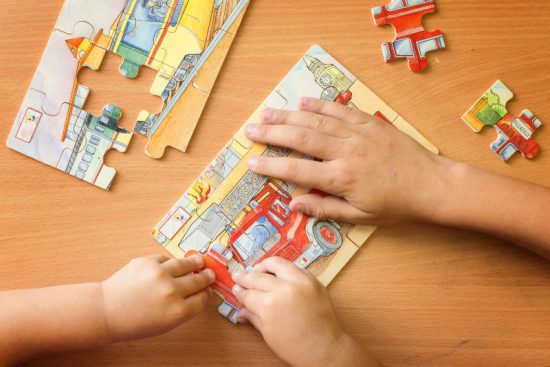
Online learning used to be an alternative. Today, it’s a standard. Whether due to health concerns, geographic challenges, flexible schooling options, or specialized programs, more families now have children learning from home. This shift has opened doors for many students—but it’s also redefined the parenting role.
You’re no longer just a caregiver. You’re also a motivator, tech troubleshooter, part-time tutor, and learning environment manager. Supporting your child’s academic success from home takes planning, patience, and new skills. And that’s what this guide is here for.
In this article, we’ll explore how to thrive in this new normal. Let’s begin.
Creating a Home Learning Environment That Works
Your child doesn’t need a custom-built study room to learn effectively at home, but they do need a dedicated space. Creating a consistent learning environment helps kids shift into school mode. A quiet corner of a bedroom or kitchen table can work well if it’s free of distractions and used regularly for schoolwork.
Keep supplies like pencils, notebooks, and chargers nearby so your child isn’t constantly getting up to search for them. Good lighting and a comfortable chair make a big difference, too. The goal is to make the space feel inviting but purposeful. When your child sits there, they should associate it with focus and learning—not with play or lounging.
Preparing Your Child for K-12 Education
As your child transitions into K-12 education—whether in a traditional school, online program, or private institution—laying a strong foundation at home is key. Early exposure to structured learning, critical thinking, and self-discipline will help them adapt more easily to formal schooling. If you’re considering private school options, private school consultants can provide valuable guidance on curriculum expectations, admissions processes, and how to align your home learning environment with future academic goals.
Encourage age-appropriate responsibilities, like organizing their workspace or completing tasks within set timeframes, to build independence. Reading together daily, discussing new concepts, and fostering curiosity will also help them develop the skills needed for long-term academic success. By creating a supportive yet structured home learning environment now, you’re preparing your child to thrive in any educational setting.

Advancing Your Own Education
While you’re helping your child learn, you might find yourself discovering a passion for education. Online programs offer flexibility that fits around your family’s schedule, and many are designed with busy parents in mind.
An online degree in early childhood education doesn’t simply open new career opportunities – it can also deepen your understanding of how children learn. You’ll explore how to support cognitive development, manage behavioral challenges, and create enriching learning experiences—all of which can immediately benefit your child’s educational experience at home. It’s a way to invest in yourself while becoming an even stronger guide for your child.
Structuring the Day: Building a Balanced Routine
Without a school bell ringing between periods, it’s easy for days to lose structure. Children benefit from having a predictable schedule. It gives them a sense of security and helps them manage time better. Start with the school’s required hours, then add in set times for snacks, physical activity, quiet reading, and breaks.
Try to stick to a consistent wake-up and bedtime routine. This helps regulate energy levels and ensures your child is rested and ready to engage. At the same time, don’t be afraid to adjust the schedule if needed. Flexibility is part of the beauty of learning at home.
Staying Involved Without Micromanaging
Being supportive doesn’t mean hovering. It’s important to find a balance between involvement and independence. Check in with your child each morning about their schedule, and ask about what they learned each afternoon. Let them explain concepts in their own words—it reinforces their understanding and shows that you’re interested.
If they’re struggling, encourage problem-solving before stepping in. Offer support, but don’t rush to fix every issue. This helps build confidence and resilience. At the same time, stay connected with teachers and review progress reports so you’re aware of any ongoing concerns.
Managing Screen Time and Online Distractions
In an online learning environment, screens are no longer just for fun—they’re where school happens. But when the same device used for education also houses games, videos, and social media, distractions are only a click away. As a parent, your role is to help your child maintain healthy boundaries and stay focused during learning hours.
First, set some clear expectations. During school time, devices should be used only for classwork. Consider using parental controls or site blockers if needed, especially for younger kids. Schedule regular breaks where they can stretch, move around, or step away from the screen entirely.
After school hours, allow some time for entertainment, but keep it reasonable. Try to balance screen-based activities with offline ones like reading, drawing, or outdoor play.
Supporting Social Development in a Virtual World
One major challenge of remote education is the lack of in-person interaction. Children miss out on casual conversations, group work, and spontaneous play. These experiences are crucial for developing social skills and emotional intelligence. That’s why it’s important to create opportunities for connection, even if they’re virtual or at home.
Encourage your child to join group activities where possible, like online clubs or collaborative projects. If their school doesn’t offer these, look for local organizations that host virtual events or interest-based groups. Even casual video calls with friends or cousins can help.
At home, family time becomes even more valuable. Board games, shared meals, and simple conversations all help reinforce communication skills.
Handling Technical Hiccups
Technology can be quite unpredictable. A frozen screen, lost connection, or platform error can throw off an entire day. It’s frustrating—for both you and your child. But how you respond can shape their attitude toward challenges.
Have a backup plan for when things go wrong. That could be printed assignments, reading time, or even a quick walk to reset. Teach your child some basic troubleshooting skills, like restarting a device or checking the Wi-Fi, so they feel empowered rather than helpless.

Encouraging Motivation and Emotional Well-being
Staying motivated outside of a traditional classroom can be difficult, especially when children feel isolated or overwhelmed. Encouragement, routine, and recognition play a huge role in keeping your child engaged. Celebrate their achievements no matter how small. This could include finishing a tough assignment or staying focused for an entire lesson.
It’s also important to talk openly about emotions. Ask how your child is feeling and listen without judgment. If they’re anxious or discouraged, validate their experience and offer reassurance.
Building a Long-Term Perspective on Learning at Home
Online education might be a temporary phase or a long-term path—it varies by family. Either way, the habits and skills developed now will serve your child well into the future. Time management, digital literacy, independent learning, and emotional regulation are valuable no matter where or how they go to school.
Your role as a parent is to guide, support, and adjust as needed. This might mean reviewing what’s working, being open to new tools, or taking a step back to let your child lead. Remember that flexibility and consistency can coexist. It’s about finding what suits your family best, not aiming for perfection.
The shift to online education has brought new responsibilities—and opportunities—for parents. You’re now more involved in your child’s learning than ever before, but you don’t need to be perfect to be effective. By creating a structured environment, supporting emotional well-being, encouraging social connections, and learning alongside your child, you’re helping them build a solid foundation for success. The digital classroom might look different, but with your steady presence, it can still be a place where your child learns and grows.




